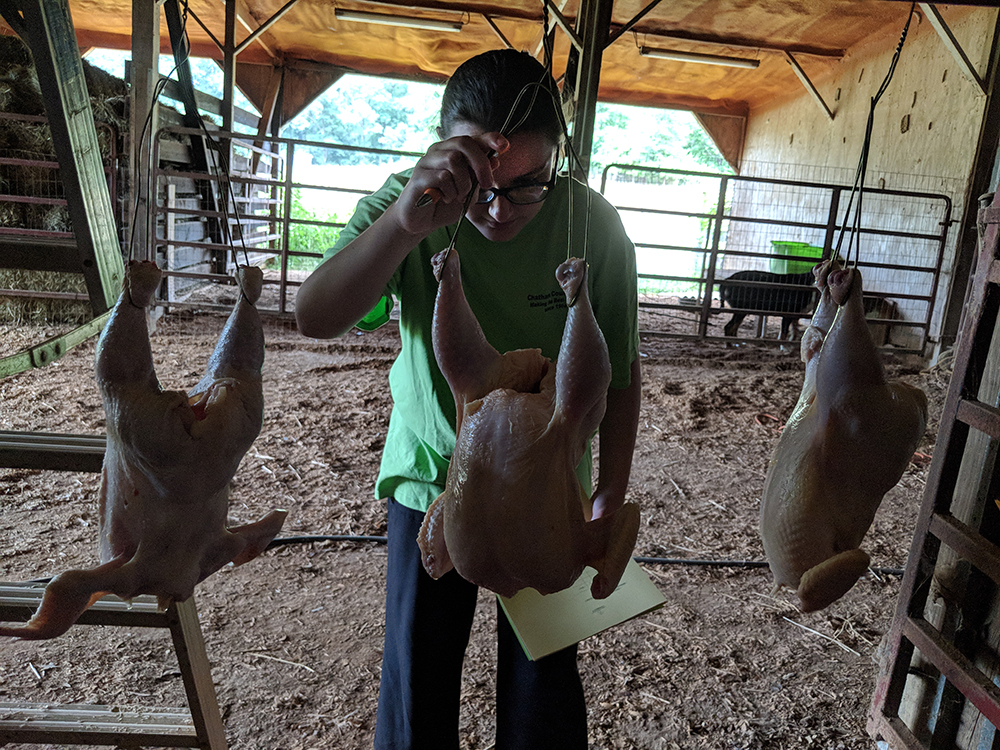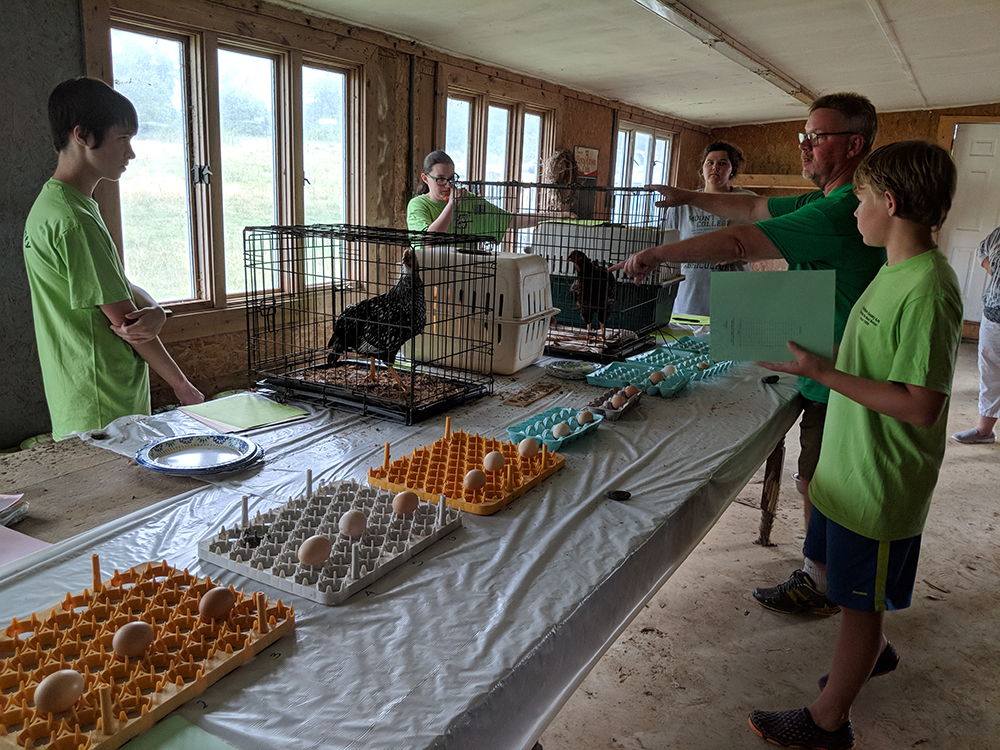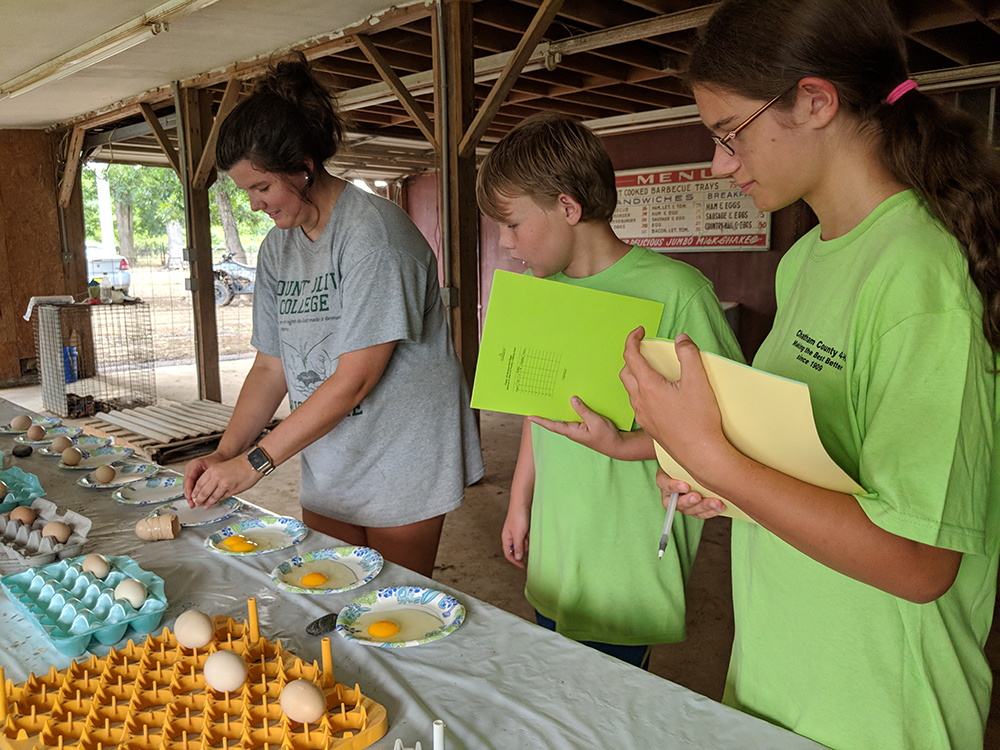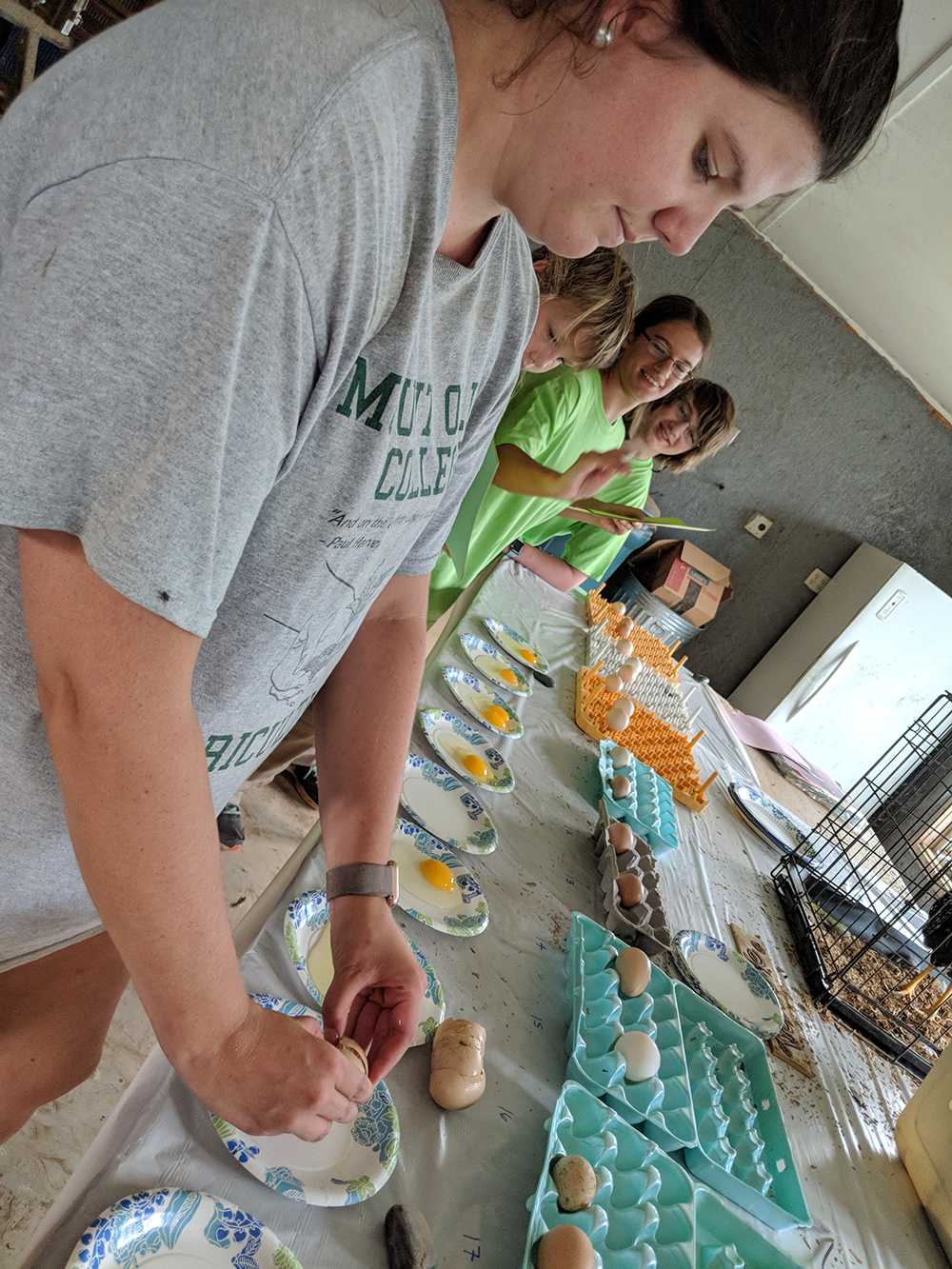Chatham County 4-H Poultry Judging Team Wins 1st Place at State Competition
go.ncsu.edu/readext?579590
en Español / em Português
El inglés es el idioma de control de esta página. En la medida en que haya algún conflicto entre la traducción al inglés y la traducción, el inglés prevalece.
Al hacer clic en el enlace de traducción se activa un servicio de traducción gratuito para convertir la página al español. Al igual que con cualquier traducción por Internet, la conversión no es sensible al contexto y puede que no traduzca el texto en su significado original. NC State Extension no garantiza la exactitud del texto traducido. Por favor, tenga en cuenta que algunas aplicaciones y/o servicios pueden no funcionar como se espera cuando se traducen.
Português
Inglês é o idioma de controle desta página. Na medida que haja algum conflito entre o texto original em Inglês e a tradução, o Inglês prevalece.
Ao clicar no link de tradução, um serviço gratuito de tradução será ativado para converter a página para o Português. Como em qualquer tradução pela internet, a conversão não é sensivel ao contexto e pode não ocorrer a tradução para o significado orginal. O serviço de Extensão da Carolina do Norte (NC State Extension) não garante a exatidão do texto traduzido. Por favor, observe que algumas funções ou serviços podem não funcionar como esperado após a tradução.
English
English is the controlling language of this page. To the extent there is any conflict between the English text and the translation, English controls.
Clicking on the translation link activates a free translation service to convert the page to Spanish. As with any Internet translation, the conversion is not context-sensitive and may not translate the text to its original meaning. NC State Extension does not guarantee the accuracy of the translated text. Please note that some applications and/or services may not function as expected when translated.
Collapse ▲This is Part 2 of this article.
Read Part 1.
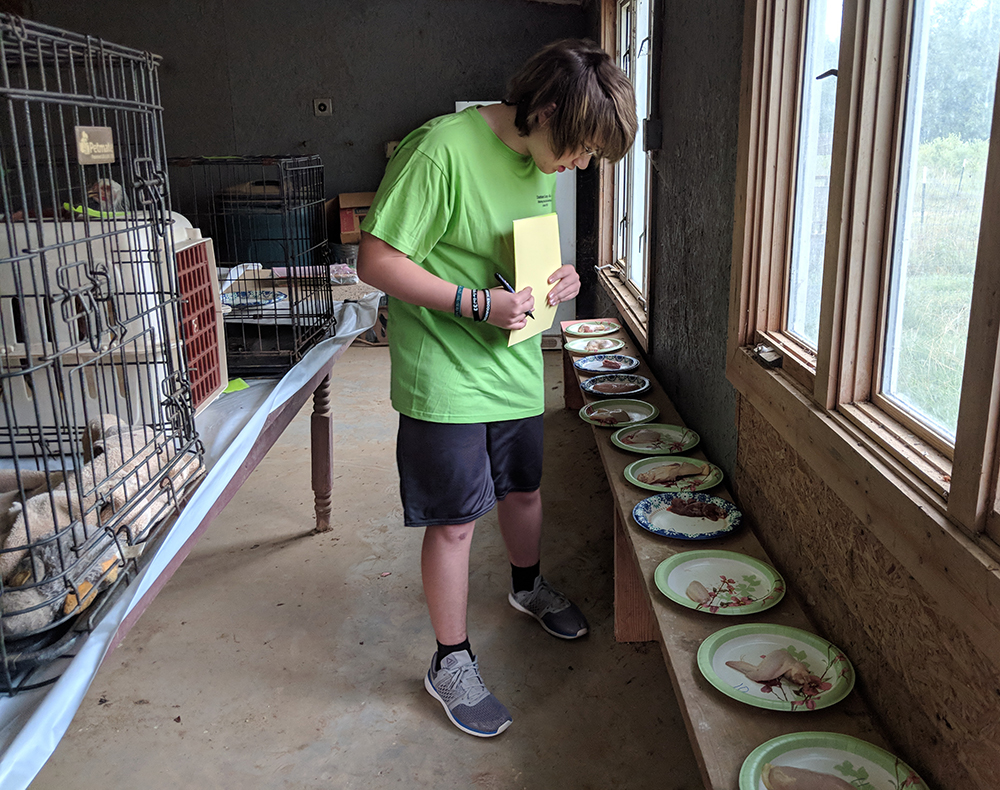
Gage is identifying poultry parts – drumstick, thigh quarter, back, breast, wings, drummette, and giblet. Photo by Debbie Roos.
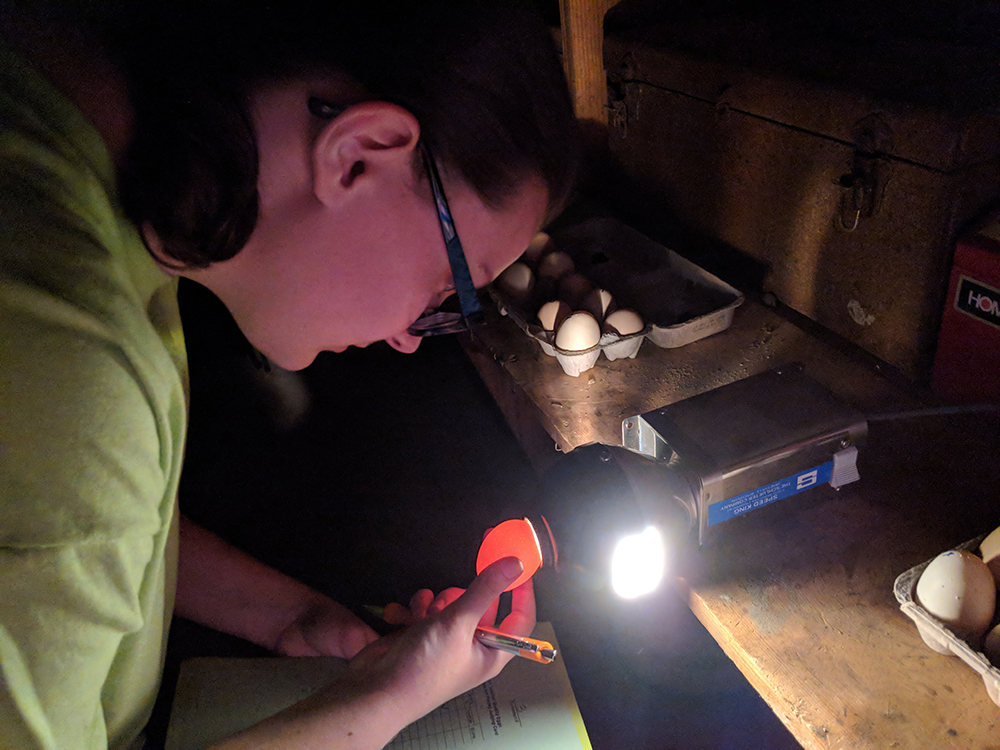
Samantha is candling an egg to be able to grade them. She is looking at air cell size and blood spots. The bigger the air cell the older the egg. Grade AA is the highest quality, the freshest, and has an air cell the size of a dime or less. Grade A is a little bit older, and is what’s most commonly found in the grocery store. Grade B eggs are usually put into cake mixes or other products. If the egg has a blood spot it is culled. Photo by Debbie Roos.
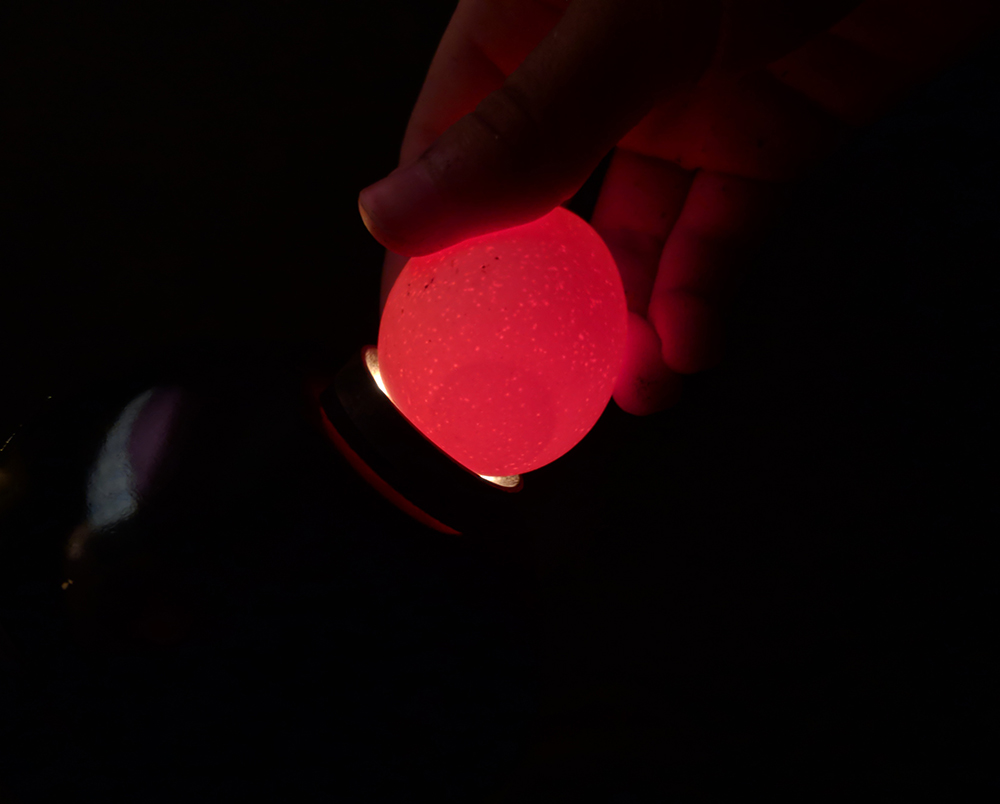
Candling an egg. You can see the air cell at the bottom of the egg – this one is about the size of a quarter which makes it a Grade B. Photo by Debbie Roos.

Kole is grading ready-to-cook carcasses. Grade A is best and is what you buy in grocery stores. He has to pick which one is Grade A, B and C; Grades B and C would be cut up and sold as parts. Photo by Debbie Roos.
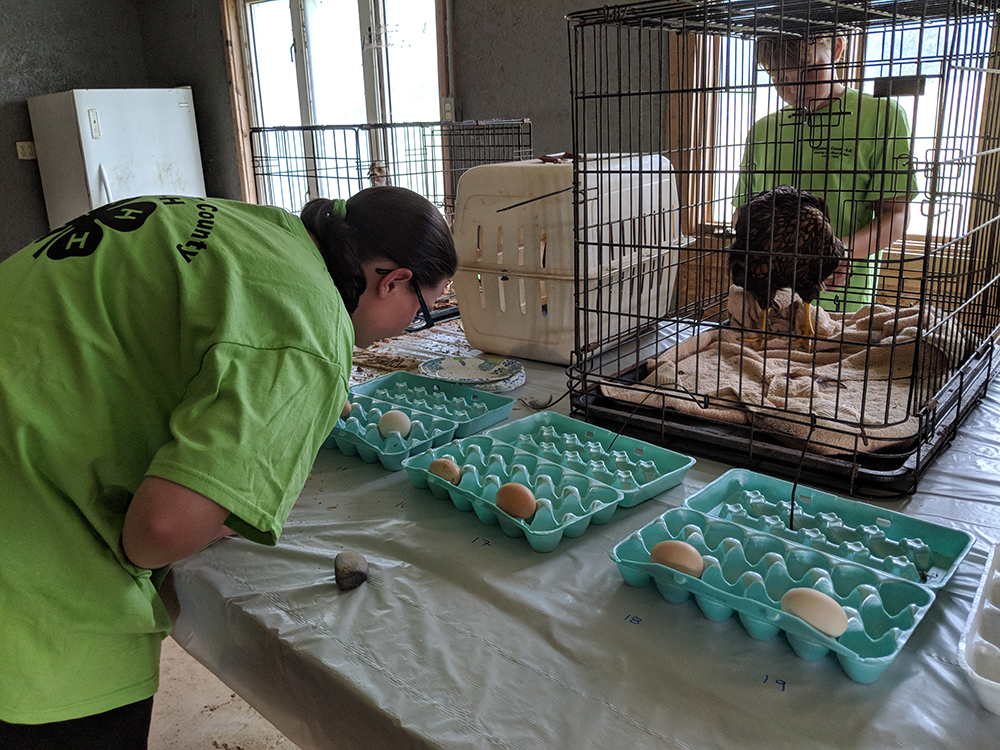
Samantha is grading exterior quality eggs, looking at shape, presence of calcium, dirt, manure, or feathers on the eggs. Grade A is what you buy in the store. Photo by Debbie Roos.
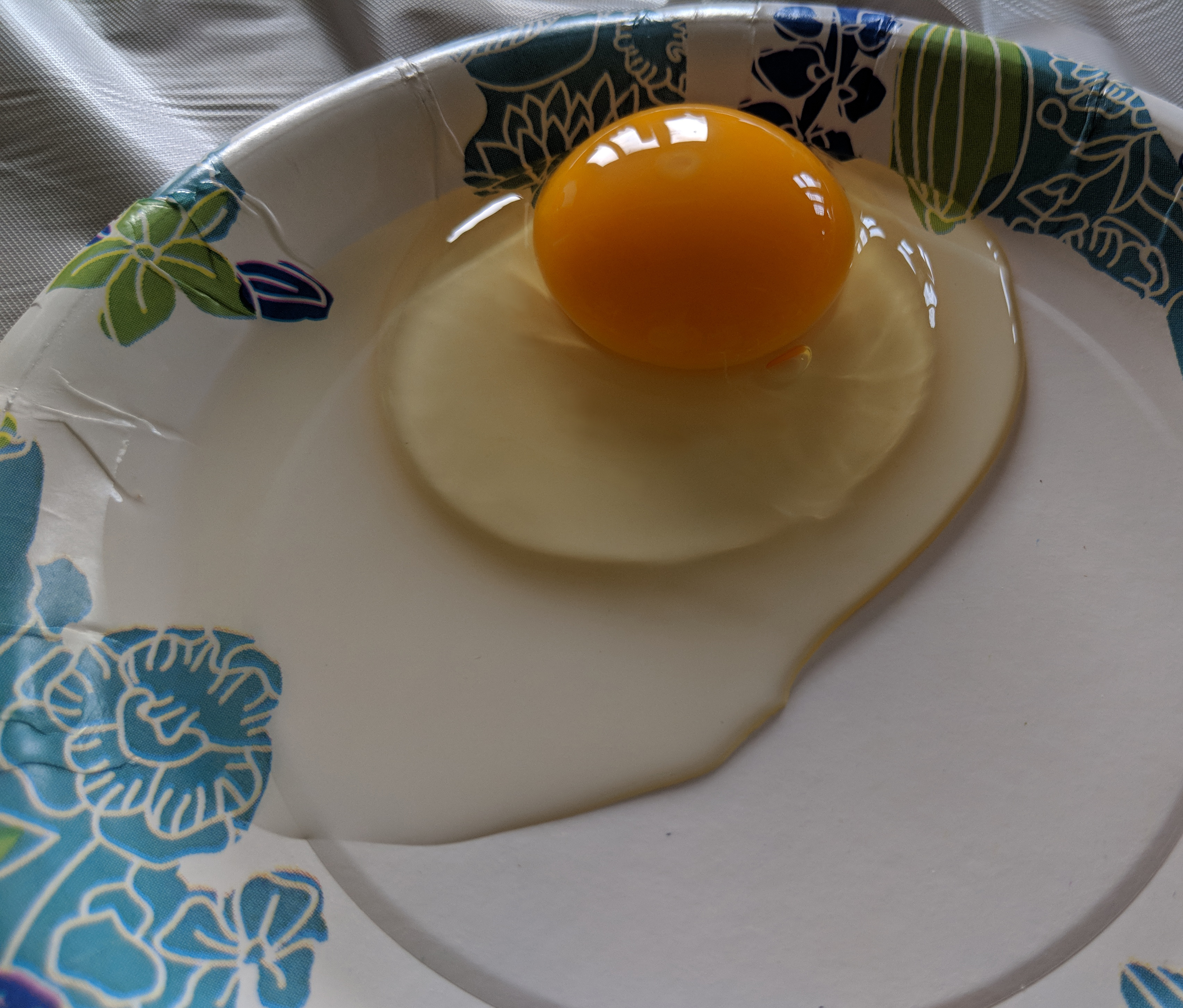
This egg is Grade AA because the yolk is upright like a golf ball, the thick albumen is close around the yolk and you can see a defined margin between the thick and thin albumen which means this egg is less than two days old. Photo by Debbie Roos.



